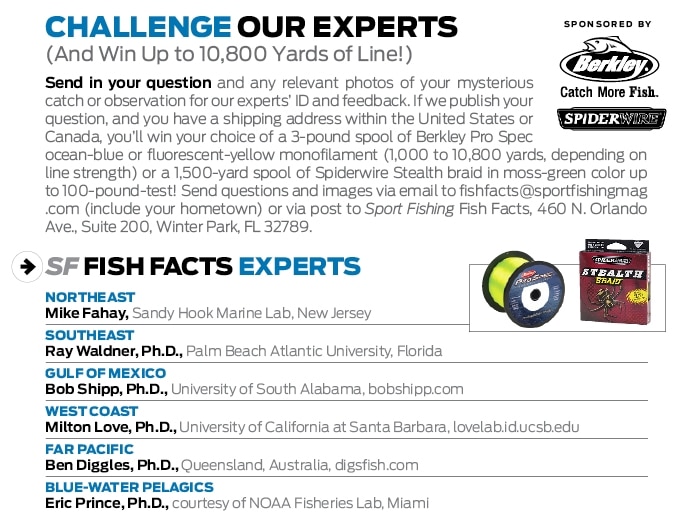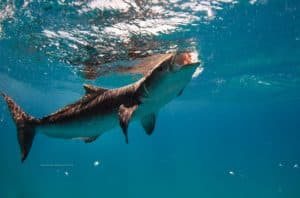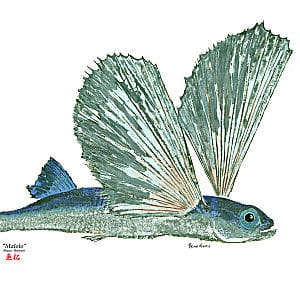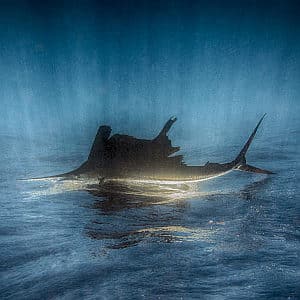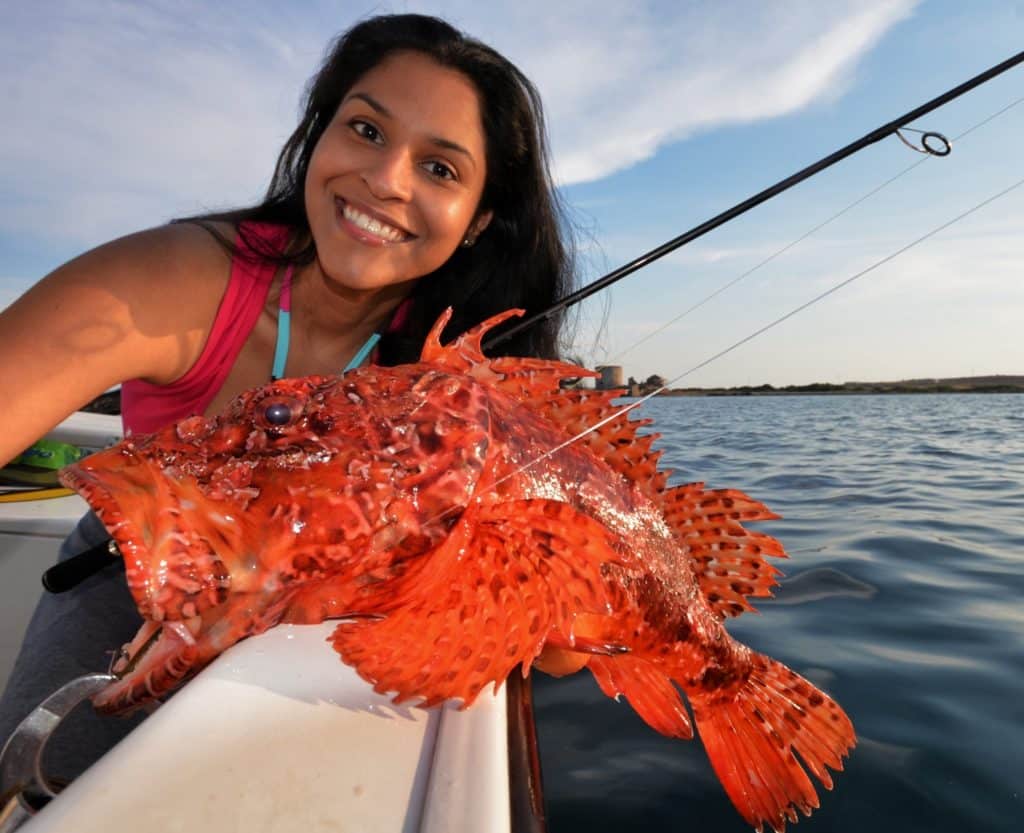
SCORPION WITH SPINES MAKES A MEAL DIVINE
While fishing with my friend Jennifer off Italy, we caught this strange fish. What species is it? Is it edible? Some people have told me it’s poisonous.
Dr. Antonio Varcasia
Sardinia, Italy FOR ANSWER SEE NEXT PAGE Dr. Antonio Varcasia
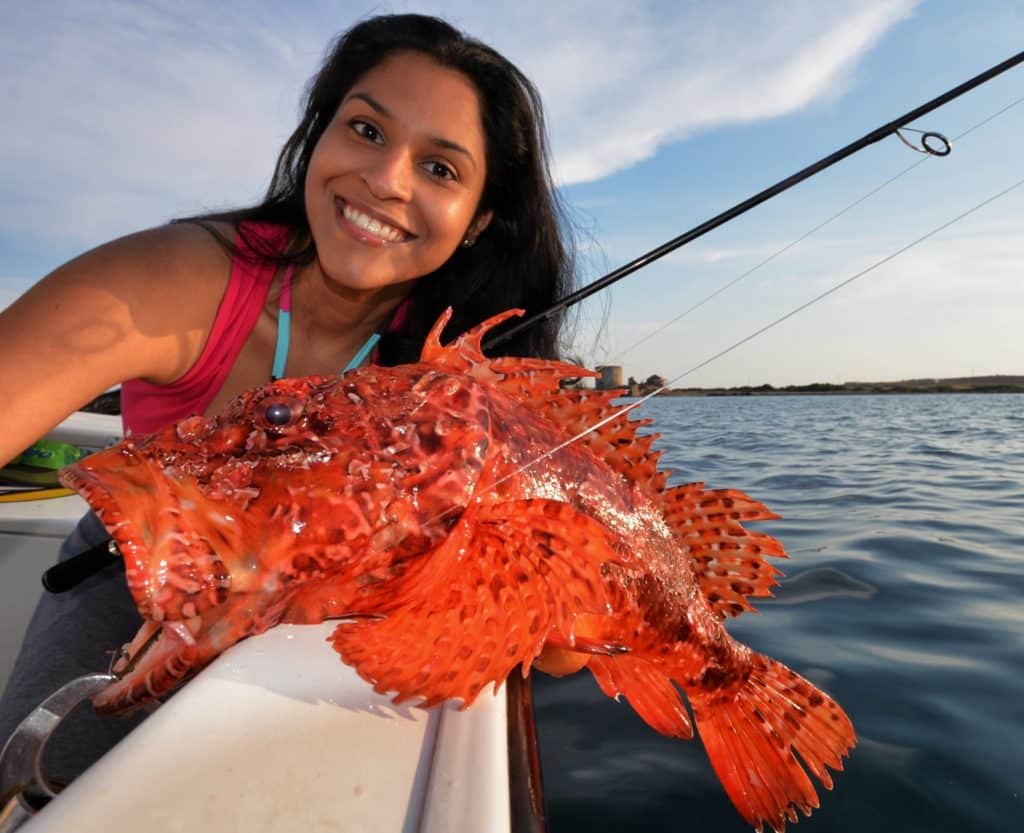
SCORPION WITH SPINES MAKES A MEAL DIVINE
Is it edible? I guess so! That’s a red scorpionfish, one of the primary ingredients in bouillabaisse as featured in Marseilles. It’s a member of the family Scorpaenidae. Many species of that family have venomous spines; if punctured by them, some people can experience a serious reaction. The red scorpionfish is also one of the biggest scorpionfishes, reaching weights of 6-plus pounds (the IGFA all-tackle record is 6 ½ pounds, from Gibraltar). It’s an eastern Atlantic species, also found in the Mediterranean Sea; it lives on the bottom in a variety of deepwater habitats, possibly including caves. The red scorpionfish is found as deep as 1,600 feet.
Mike Fahay Dr. Antonio Varcasia
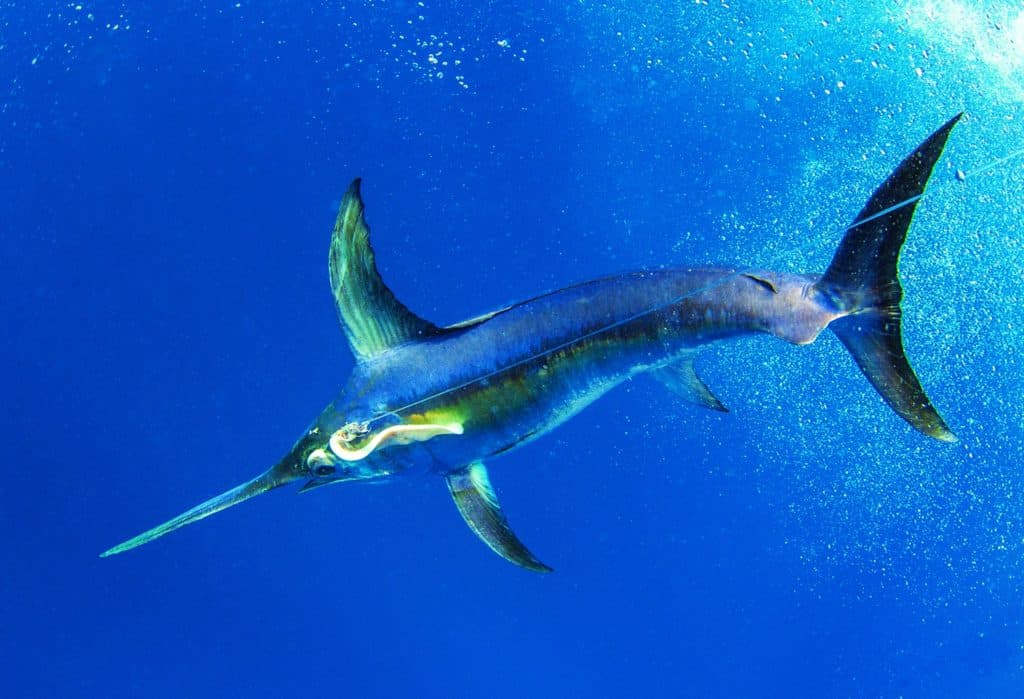
TAILS FROM THE DEEP SIDE
I’ve had hands-on experience with both makos and swordfish, and several times have had them lying side by side. The area just in front of the tail of both species is very similar, but different from most other species. Does this thick area have a specific purpose? Both species are immensely strong and fast, but no more so than tuna or marlin.
Capt. Ken Roy
Crystal River, Florida FOR ANSWER SEE NEXT PAGE Adrian E. Gray
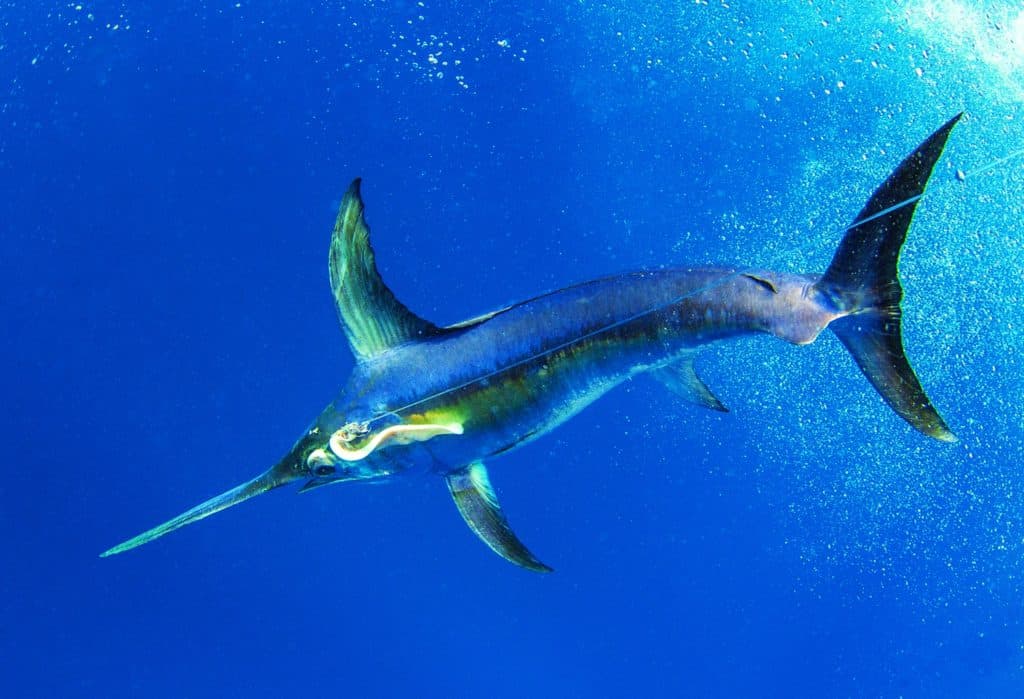
TAILS FROM THE DEEP SIDE
The slender area just in front of a fish’s caudal fin is called the caudal peduncle. A number of rapidly swimming fishes have stiff, lateral projections called keels associated with their caudal peduncles. Fishes such as the mackerel sharks (members of the family Lamnidae) and broadbill swordfish (family Xiphiidae) have a single very broad keel on either side of their peduncles. Billfishes — sailfishes, spearfishes and marlins (family Istiophoridae) — may have a pair of smaller keels on each side. Most tunas and mackerels (family Scombridae) have a large, central keel on each side of their peduncles, accompanied by two smaller keels positioned somewhat posterior to, and on either side of, the main keel.
Peduncular keels may serve a number of purposes, including strengthening and stiffening a fish’s peduncular area, reducing drag, and helping to stabilize a fish’s caudal region as it moves laterally through the water at a rapid pace. Caudal keels are characteristic of fishes that have falcate or lunate caudal fins — sickle-shaped tail fins that can be moved rapidly through the water. A narrow caudal peduncle with the strength, rigidity, stability and hydrodynamics afforded by peduncular keels, coupled with a sickle-shaped caudal fin, helps species such as billfishes achieve speeds in excess of 60 miles per hour in a medium that is some 800 times denser than air — a truly remarkable evolutionary achievement!
— Ray Waldner Adrian E. Gray

NICE SET OF PIPES
One of my partners, Capt. Kenny Shiyou, pulled two of these funky-looking little guys out of our bait pen in Bayou Caddy, Mississippi, in early spring. Our dock is in brackish water with plenty of oyster shells, over a muddy bottom. These were small enough to slip through the small-diameter mesh of the pens. I think he may have interrupted these two in the middle of some “alone time.” It appears as though one had a small egg sac stuck to it; I can only assume one is male and the other female. Capt. Kenny thought they might be some type of eel, but I’m suspecting some kind of cornetfish. I have caught cornetfish over salt domes south of the Mississippi River, but they were massive compared to these guys. I just want to know what these are and if they could be used for bait. Also, did we catch these two in a compromising position? Maybe we need to start putting a “do not disturb” sign on the bait pens.
Capt. Sonny Schindler
Bay St. Louis, Mississippi FOR ANSWER SEE NEXT PAGE Capt. Sonny Schindler
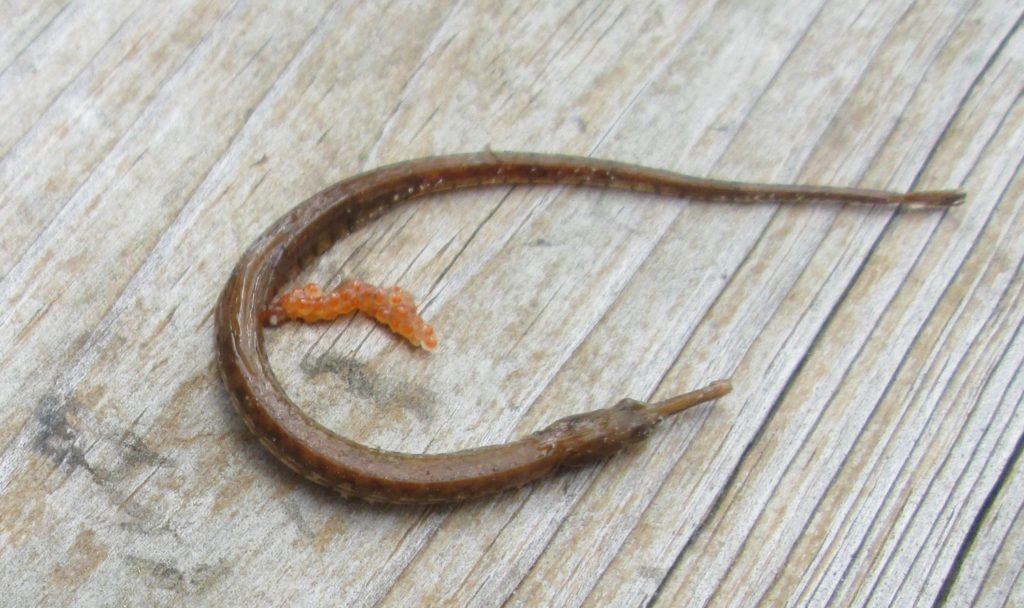
NICE SET OF PIPES
Sonny, what you guys came up with is a pair of pipefishes of genus Syngnathus.Based on where you got them, I’d have to bet on the Gulf pipefish, S. scovelli. But there are an amazing number of species, probably at least a dozen, that may call the Gulf of Mexico home. Some of these have very specific habitats, such as the Sargassum pipefish, which lives only in that weedy habitat. The Gulf pipefish is the only species that favors brackish waters, and may even ascend into fresh water. Despite its name, it can be found as far south as South America.
Traits distinguishing various species include snout length, number of body segments, and other even more subtle characters. Some are attractively colored. Pipefishes are first cousins to seahorses, and in fact are in the same family. They share the most peculiar habit of having the male brood the young after the eggs have been transferred from the female to a pouch on the male’s underside. And the young are born alive, exiting the pouch ready to swim and forage. As to whether you interrupted a mating activity, it’s hard to say. It’s possible that the apparent egg mass was in transit from female to male.
— Bob Shipp Capt. Sonny Schindler
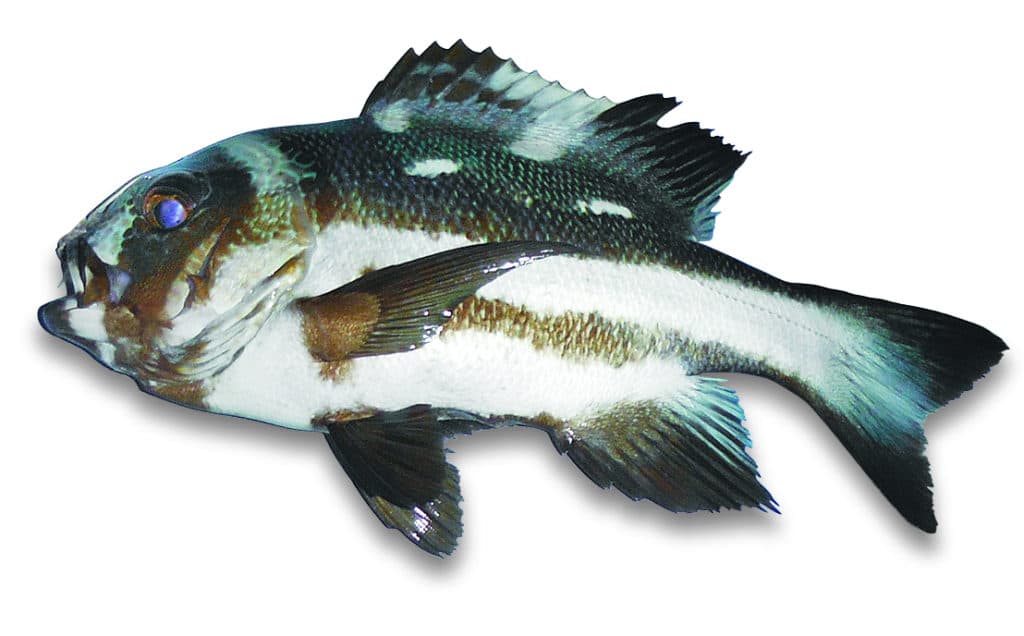
MAY I CALL YOU BABY SWEETLIPS?
I have been fishing in the Maldives for the last 15 years. I troll for pelagics — but the best fun is baitfishing on the reef bommies, which is where this fish was caught. It is unknown to me, not having even a local name. I hope you can shed some light!
Guy Morey
Isle of Wight, England FOR ANSWER SEE NEXT PAGE Guy Morey
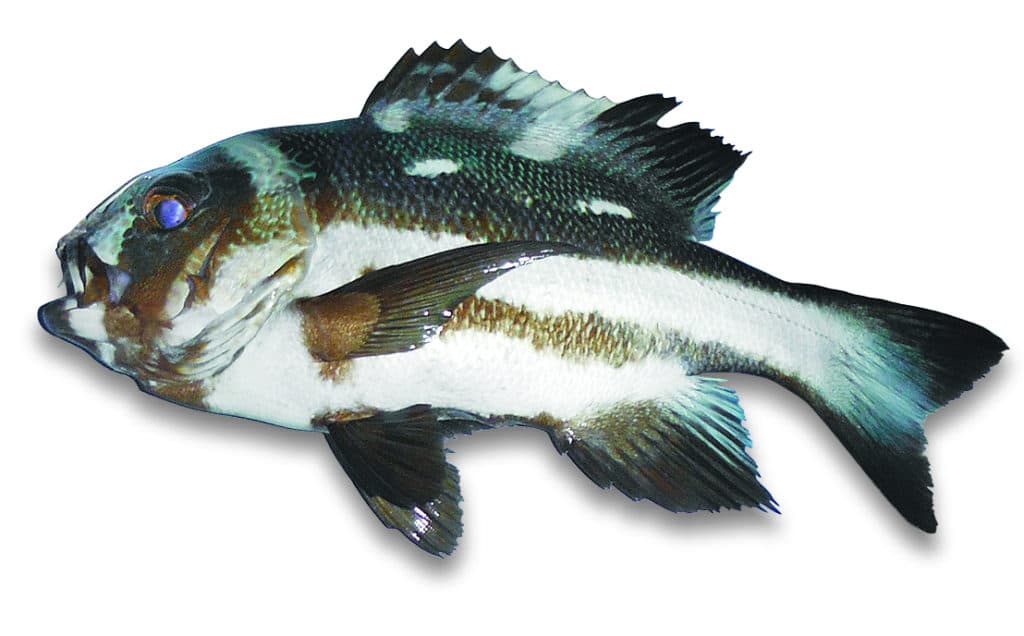
MAY I CALL YOU BABY SWEETLIPS?
The black-and-white fish you have there, Guy, is a juvenile grunt from the family Haemulidae. Grunts are so named due to the grunting noises they make when they grind their pharyngeal teeth. They use the swim bladder as an amplifying chamber. This particular fish is a member of the subfamily Plectorhinchidae (sweetlips or thicklips), of which seven species occur in the Maldives. Juvenile sweetlips exhibit remarkable changes in color patterns as they grow, making them difficult to identify at certain stages of life, but this one looks very much like a juvenile spotted or painted sweetlips (Plectorhinchus picus). The species grows to around 2 feet long, is active mainly at night, and can be encountered near coral reefs throughout the tropical areas of the Indian Ocean and western and central Pacific. As adults, painted sweetlips contrast markedly with the juvenile form by being generally pale, with large numbers of small black dots along the body and caudal fin.
— Ben Diggles Guy Morey
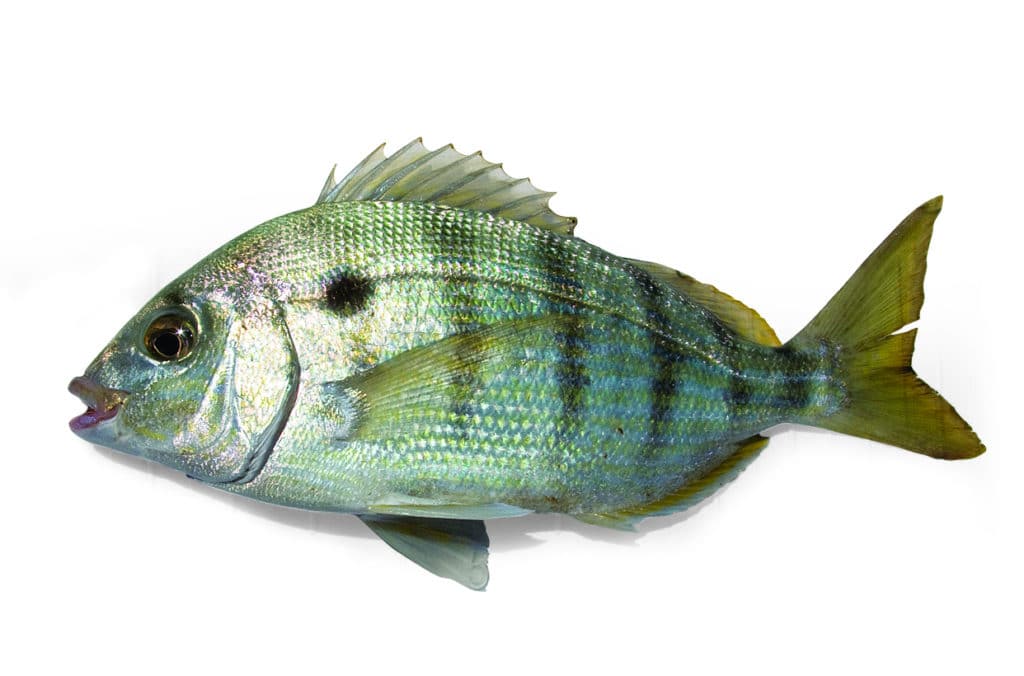
STEROIDAL PIN
Recently, I caught a large specimen of a species that I’m used to seeing much smaller. I thought it was a sheepshead until I brought it in the boat. I’m pretty sure this is a pinfish, common in Florida and frequently used as live bait. If so, how much larger than this 11 ½-inch specimen do they get? Also, at this size, one might consider inviting it to dinner: Are pinfish good eating? This one was released at the Fort Pierce Inlet, where I caught it on a spoon.
Capt. Tim Simos
Fort Pierce, Florida FOR ANSWER SEE NEXT PAGE Capt. Tim Simos
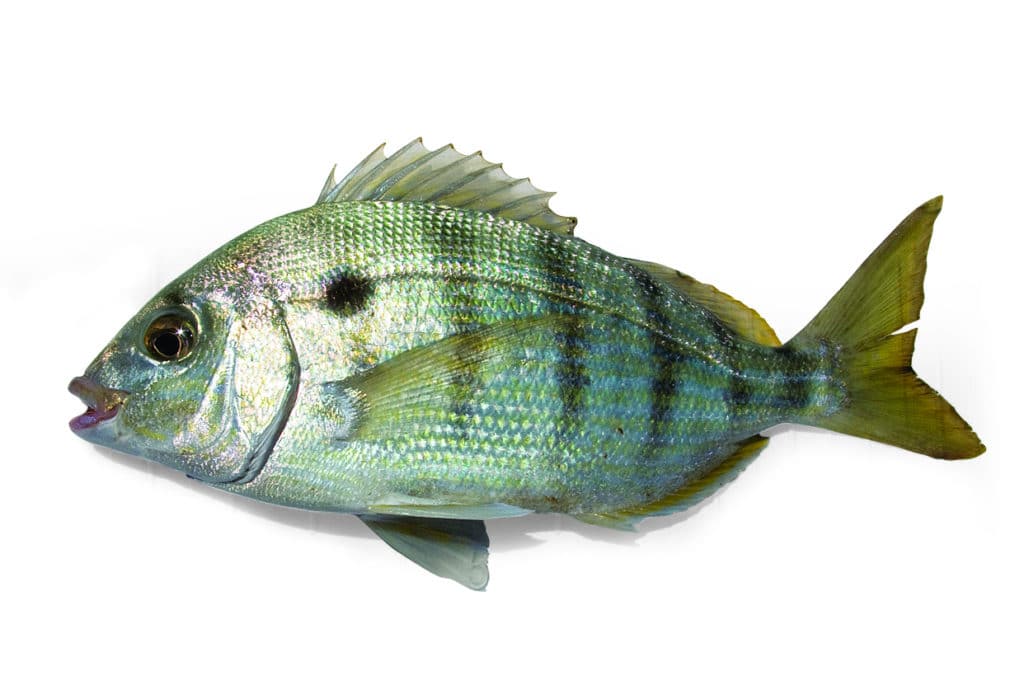
STEROIDAL PIN
That is indeed a big pinfish, Lagodon rhomboides, Tim. As you noted, the pinfish is a popular baitfish; the species frequents sea-grass beds, mangrove roots and shallow-water reefs from Massachusetts and Bermuda through the Gulf of Mexico and to the Yucatan Peninsula. However, the pinfish — while present in Cuban waters — is absent from the Bahamas and the Antilles. A member of the porgy family (Sparidae), larger individuals make good table fare, but one has to be careful of swallowing bones. Pinfish can grow to around 16 inches in length (the IGFA world record is an astounding 3 pounds 5 ounces, caught off Mississippi), but most are much less than half this size. I’ve caught pinfish on jigs and small swimming plugs, so I’m not surprised you caught one on a spoon. They put up a dogged fight for fish of their stature.
— Ray Waldner Capt. Tim Simos
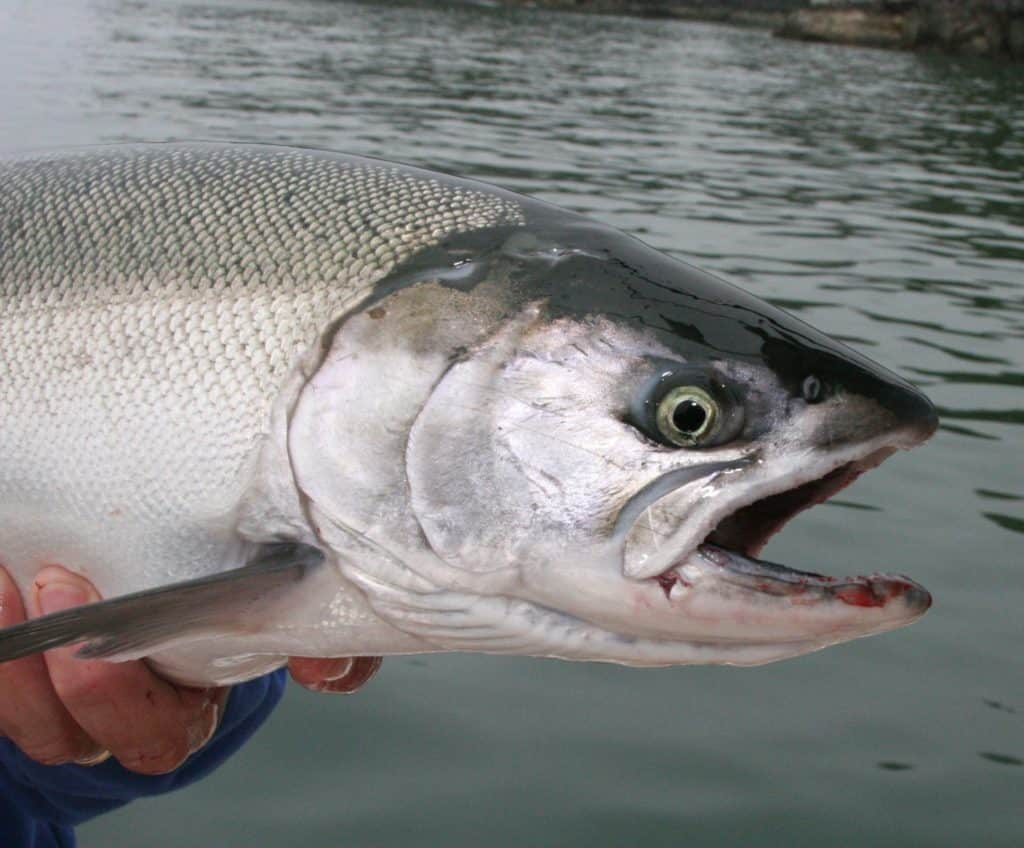
FROM THE FISH FACT ARCHIVES
(Oncorhynchus kisutch)
Although not the largest of the six Pacific salmon species, the coho (aka silver) is the most agile and wildest on the hook, often leaping repeatedly. The coho ranges from California north to Alaska and west to the Kamchatka Peninsula. The IGFA all-tackle record is 33 pound 4 ounces, from New York’s Salmon River in 1989. (The species was successfully introduced to Lake Michigan in the 1960s.) Doug Olander / Sport Fishing
